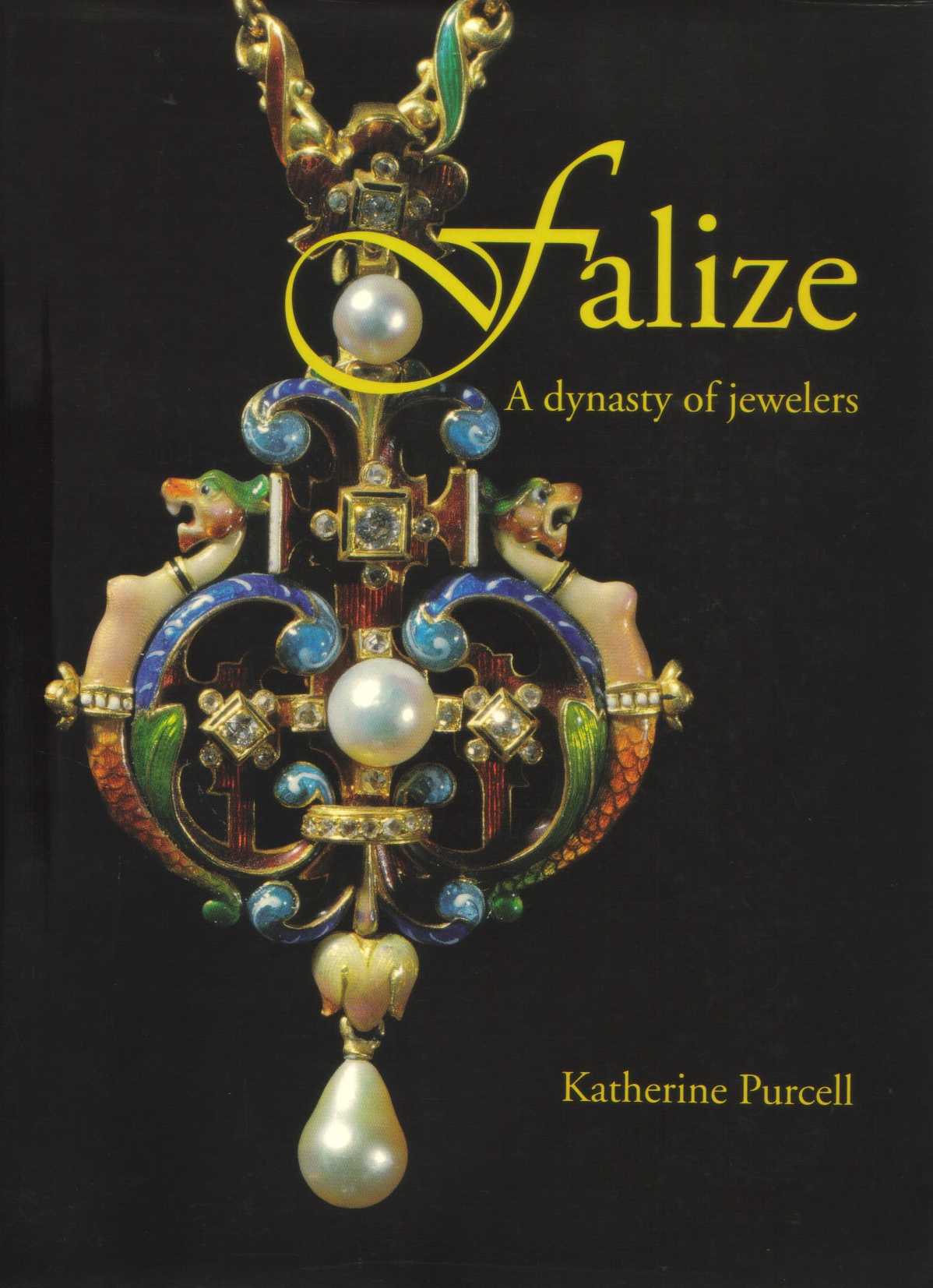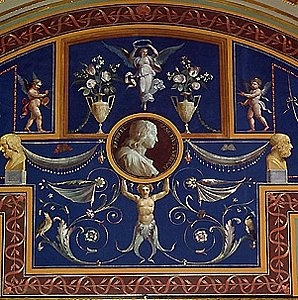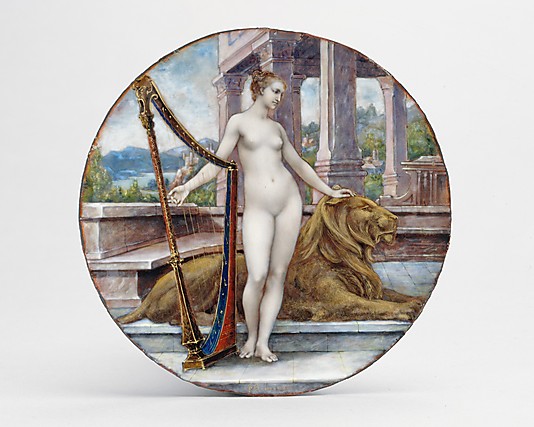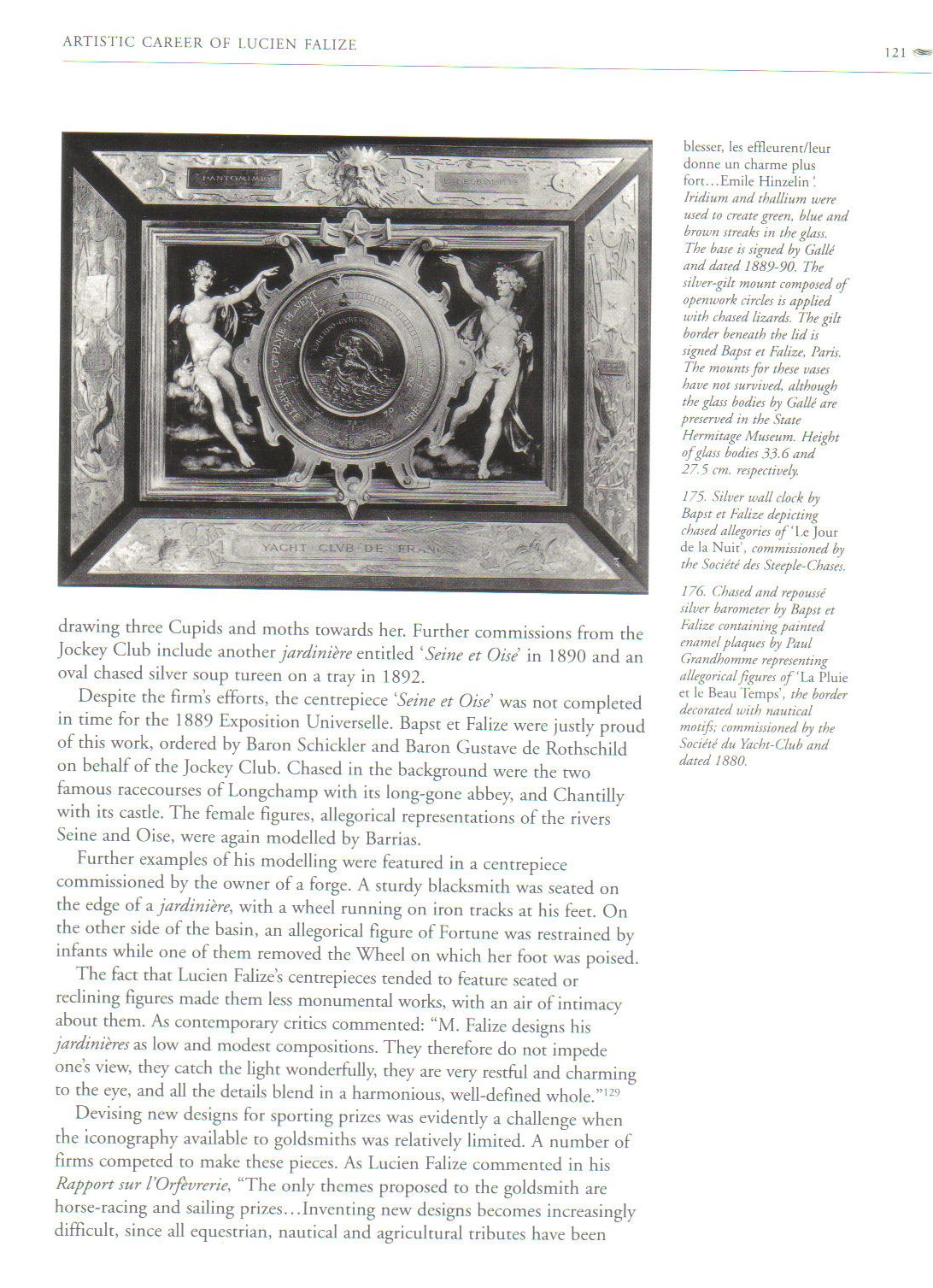A Monumental Renaissance Revival Enamel and Ebonised Wood Mirror
France, circa 1880
In the style of Paul Grandhomme
In the style of Paul Grandhomme
91 ½ in (231 cm) high, 55 in (139.7 cm) wide
cf. Katherine Purcell, Falize: A Dynasty of Jewelers, 1999, p.121, fig.176
cf. Katherine Purcell, Falize: A Dynasty of Jewelers, 1999, p.121, fig.176
Paul Grandhomme was recognised by his contemporaries as a master enameller, his work compared to the finest Renaissance Limoges enamellers, in whose tradition
he worked. Inspired by the famous enameller Claudius Popelin, he experimented with enamelling techniques and mastered the Limoges style of enamelling, choosing a brown or black background to his enamels which give them a luminous quality. He supplied many of the great French jewellery firms, such as Falize and Boucheron. Among many important works Grandhomme produced for Falize were two extraordinary portraits of Alexis and Lucien Falize, as well as a number of exhibition pieces.
This impressive enamelled mirror combines many of Grandhomme's characteristic techniques and incorporates the classical design he so often used in the decoration of his pieces.
Limoges was famed for its enamels from as early as the 12th century, although production of these early champlevé enamels ceased after the city was sacked in 1371. Enamelling was revived at the beginning of the 16th century, but instead of using champlevé, the Renaissance enamellers painted their creations, their techniques possibly influenced by contemporary developments in the production of painted stained glass. Glass powder was mixed with various minerals to produce different colours and painted on with a varnish. This was a painstaking and highly complex process, as the colours vitrified at different temperatures: those requiring the highest temperature had to be painted first. Early pieces were often painted in grisaille, with more colours added as they were developed.
These 16th-century enamellers worked in the Mannerist style characteristic of the High Renaissance. At Fontainebleau, artists developed a new ornamental style called strapwork, which became a hallmark of the period. Strapwork was often accompanied by grotesques, inspired by Roman decorations found on Nero's Golden House in Rome, which was discovered at the end of the 15th century. The scenes portrayed on these enamels were frequently taken from contemporary prints, showing biblical and mythological episodes. This combination of classical inspiration, both in the figure surmounting the mirror, and in its overall architectural design, with decorative grotesque masks and figures is clearly reflected in the Grandhomme piece.
This impressive enamelled mirror combines many of Grandhomme's characteristic techniques and incorporates the classical design he so often used in the decoration of his pieces.
Limoges was famed for its enamels from as early as the 12th century, although production of these early champlevé enamels ceased after the city was sacked in 1371. Enamelling was revived at the beginning of the 16th century, but instead of using champlevé, the Renaissance enamellers painted their creations, their techniques possibly influenced by contemporary developments in the production of painted stained glass. Glass powder was mixed with various minerals to produce different colours and painted on with a varnish. This was a painstaking and highly complex process, as the colours vitrified at different temperatures: those requiring the highest temperature had to be painted first. Early pieces were often painted in grisaille, with more colours added as they were developed.
These 16th-century enamellers worked in the Mannerist style characteristic of the High Renaissance. At Fontainebleau, artists developed a new ornamental style called strapwork, which became a hallmark of the period. Strapwork was often accompanied by grotesques, inspired by Roman decorations found on Nero's Golden House in Rome, which was discovered at the end of the 15th century. The scenes portrayed on these enamels were frequently taken from contemporary prints, showing biblical and mythological episodes. This combination of classical inspiration, both in the figure surmounting the mirror, and in its overall architectural design, with decorative grotesque masks and figures is clearly reflected in the Grandhomme piece.






















